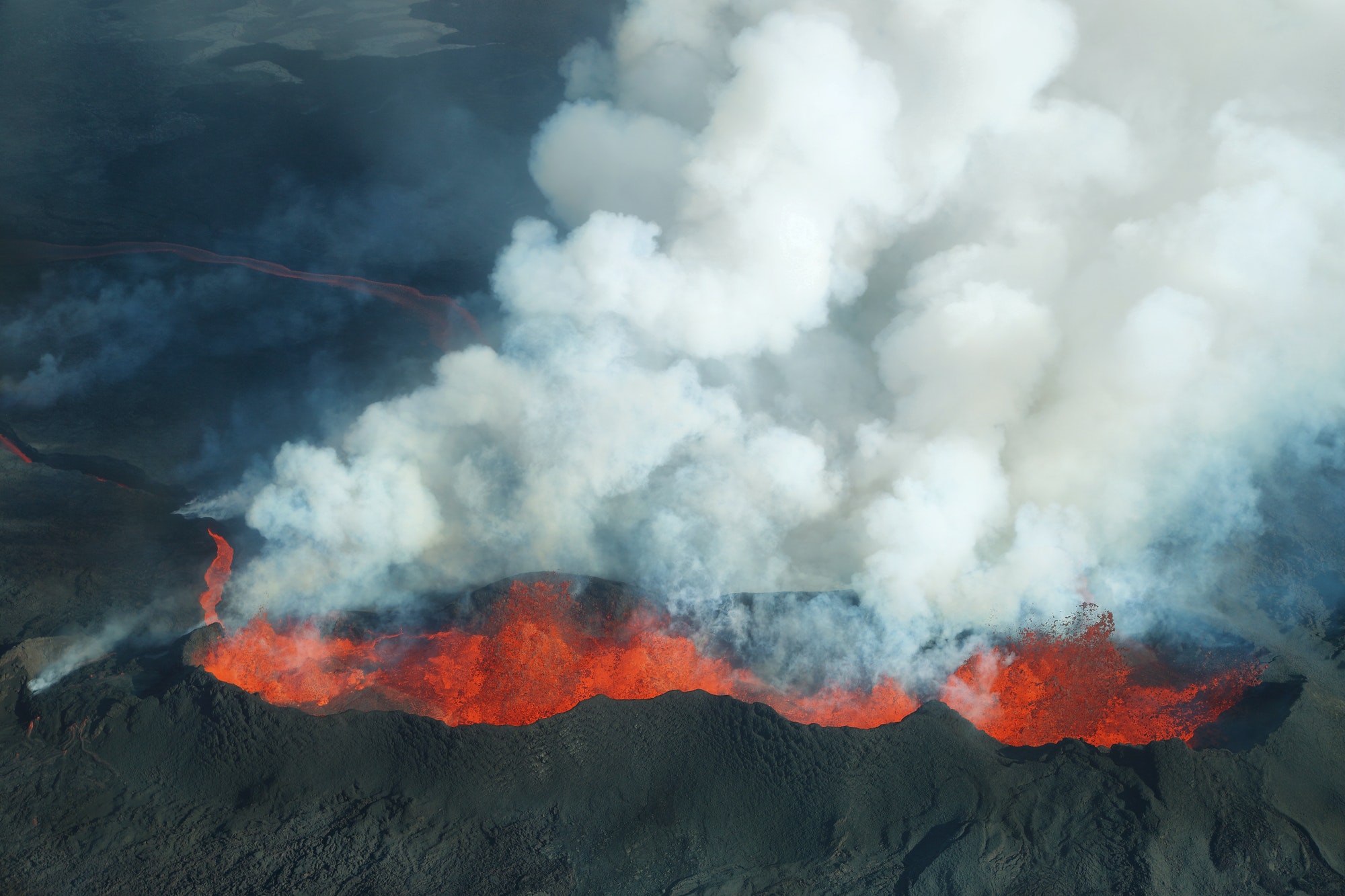What Happened with the Iceland Volcano
When It All Started
One Sunday in southwest Iceland, things went wild. A volcano erupted big time, sending lava towards a small fishing town. This wasn’t just another day in Iceland – it was a major event showing how cool yet scary Iceland’s nature can be.

People Had to Leave Fast
The volcano made the nearby town evacuate quickly to stay safe. Although everyone got out okay, the lava did some serious damage, burning buildings and threatening the town’s future.
Why It Happened: The Science Stuff
Earthquakes and Lava Everywhere
Iceland is famous for its awesome landscapes and loads of volcanoes. This time, the ground shook a lot, and there were massive spouts of lava and smoke. It was a crazy scene over at Reykjanes peninsula.
Trying to Stop the Lava
Authorities tried to save the town of Grindavik by building big walls of dirt and rock. But the lava was too strong and broke through, showing that nature can be unstoppable.

What This Eruption Means
Iceland is a Volcano Hotspot
This wasn’t a one-time thing. The Reykjanes peninsula has been pretty active with volcanoes, and this was the fifth eruption since 2021.
Tourism Takes a Hit
The eruption messed up the area’s volcano tourism, which usually brings in lots of visitors. The famous Blue Lagoon spa had to close too, which hurt the local economy.
How Iceland and the World Reacted
Iceland’s President told everyone that there was no danger to people, but buildings could be in trouble. Surprisingly, this eruption didn’t mess up air travel like the big 2010 Eyafjallajokull eruption did in Europe.
Wrapping It Up
This whole volcano situation in Iceland is a big deal. It shows how our planet can change suddenly and why we need to be ready for anything. Iceland’s people are pretty tough, facing off against nature’s power, and they remind us how amazing yet fierce our world can be.

Frequently Asked Questions (FAQ)
Q1: Is it safe to visit Iceland now?
A: Yes, it’s safe to visit most parts of Iceland. The eruption area is closely monitored, so just avoid any restricted zones. Iceland’s a big place with lots of safe, amazing spots to see!
Q2: Why do so many volcanoes erupt in Iceland?
A: Iceland sits on the Mid-Atlantic Ridge, where two huge tectonic plates meet. This makes it a hotspot for volcanic activity. Basically, the earth’s crust is super active there.
Q3: How often do volcanoes erupt in Iceland?
A: It’s unpredictable, but on average, there’s a significant eruption every 4 to 5 years. But keep in mind, smaller eruptions happen more frequently.
Q4: What happened to the people living near the eruption?
A: Everyone was evacuated safely, and there were no injuries. The government and aid organizations are helping them out.
Q5: Can volcanic ash from Iceland affect other countries?
A: It can, depending on the size of the eruption and wind patterns. Like in 2010, the Eyafjallajokull eruption caused air travel issues in Europe. But this time, there wasn’t much impact.
Q6: Will this eruption change the landscape?
A: Definitely. The lava can create new landforms and alter the landscape. It’s a part of Iceland’s ever-changing natural beauty.
Q7: What should tourists do if there’s an eruption while they’re in Iceland?
A: Stay calm, follow local news, and adhere to safety instructions from authorities. Always have a plan for natural events when traveling in Iceland.
Q8: How does this affect Iceland’s wildlife?
A: Wildlife in the area might be temporarily displaced. But Iceland’s animals are adapted to its volcanic nature, so they usually manage well.
Q9: Are eruptions like this good for the environment in any way?
A: In the long run, volcanic soil is very fertile, so eruptions can eventually lead to rich plant growth. They’re also part of natural processes that shape our planet.
Q10: Can I see the volcano eruption safely?
A: Yes, but only from designated viewing areas set up by the authorities. They’ll make sure you’re at a safe distance.
Sources Reuters


